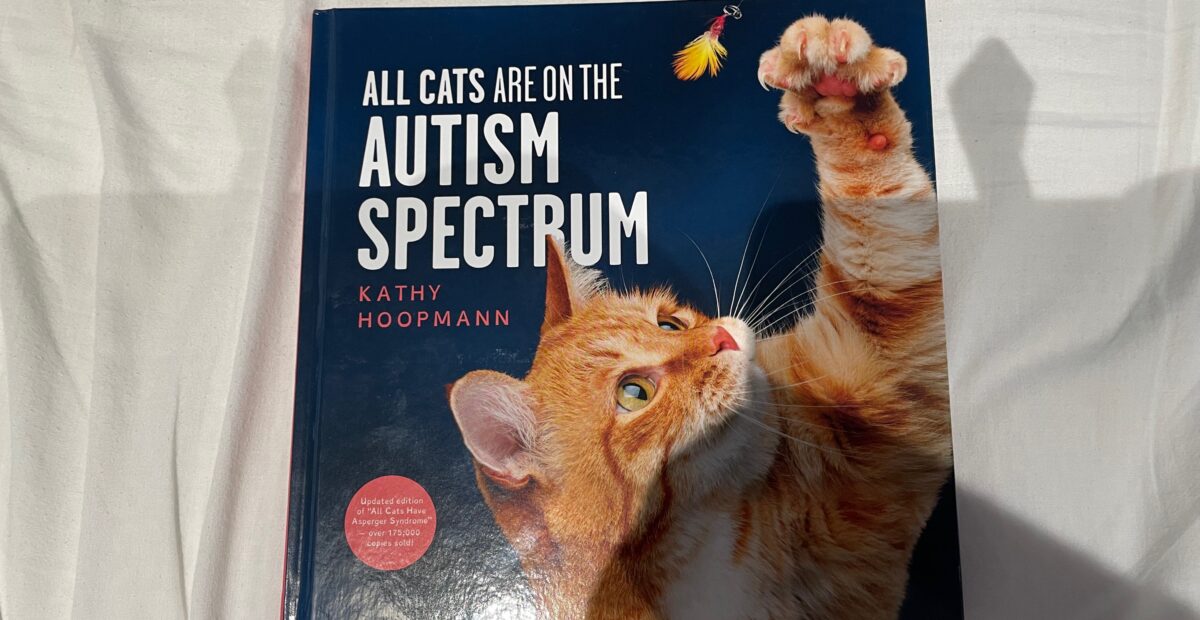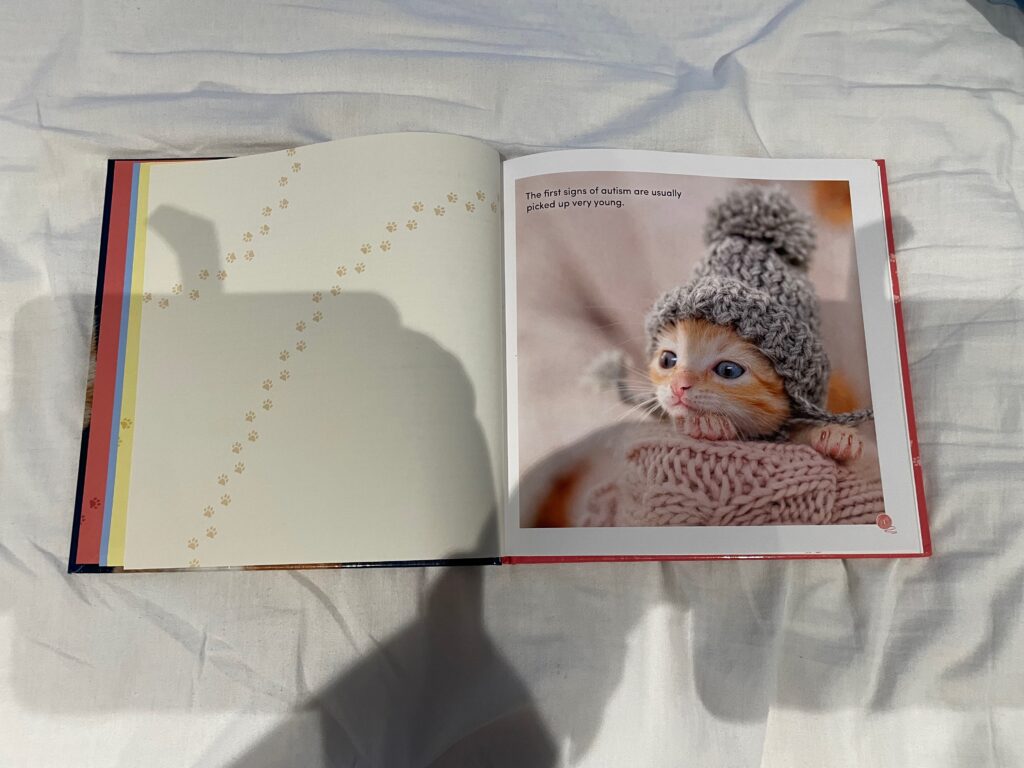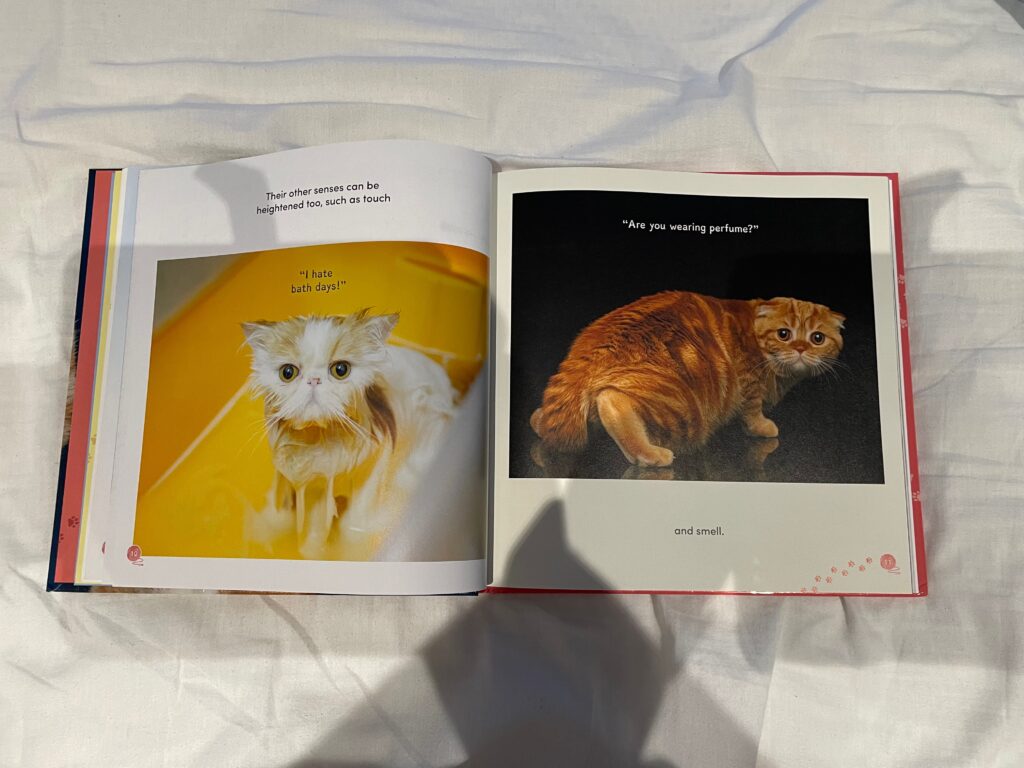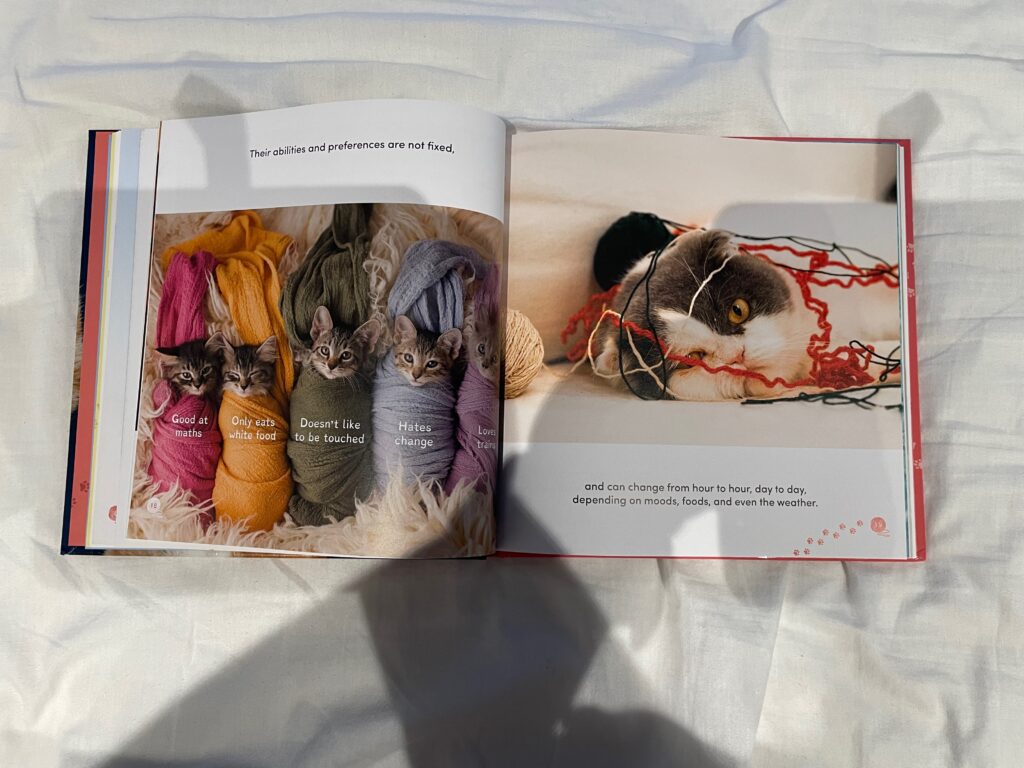Book Review: All Cats Are on the Autism Spectrum

All photography in this post is by April Slocombe.
Introduction

All Cats Are on the Autism Spectrum (2021) is a book that Kathy Hoopman wrote. It is an updated version of All Cats Have Asperger Syndrome (2006) that Hoopman also wrote.
In Hoopman’s note at the beginning of the book, she explains some reasons why she updated the book. In 2013, the DSM-5 “eliminated the term Asperger Syndrome and placed it under the generic umbrella of Autism Spectrum Disorder.” Changing the title of the book makes more sense because it covers all types of autism that are diagnosed under the umbrella.
Hoopman has also stated that in 2006, most people who were diagnosed with autism were male, which is why All Cats Have Asperger Syndrome only uses male pronouns. Since then, more females have been diagnosed, hence why All Cats Are on the Autism Spectrum uses gender-neutral pronouns instead of male pronouns.
Towards the end of All Cats Have Asperger Syndrome, one sentence says, “there is a little bit of Asperger’s in us all.” While Hoopman thought this statement was empathetic in 2006, many people have since found it incorrect and “insulting to those on the spectrum as it belittles the very real challenges they face daily.”
All Cats Are on the Autism Spectrum states that “the first signs of autism are usually picked up very young.” This statement makes more sense than Asperger syndrome being picked up very young in All Cats Have Asperger Syndrome because people with Asperger syndrome were usually diagnosed with it later in life.
Social Challenges

People with autism may face the following social challenges the book mentions:
- Liking “to be near those they love, but might not want to be held.”
- Preferring a toy or a pet for comfort to other people.
- Not responding to “their name or requests as if they can’t hear at all.”
- Getting “worried if their schedules or surroundings are changed.”
- Finding it hard to “stay organised and manage their own time.”
- Their faces not always showing how they feel on the inside.
- Non-autistic people may think those with autism “have no emotions, which is not true at all.”
- Finding “body language difficult to read.”
- Upsetting others “without knowing why.”
- People with autism can stay awake at night and wonder “what they did wrong and what they could have done differently.”
- Not being interested in fads that others follow.
- Pretending to be something they are not to fit in.
- Trying to fit in being exhausting.
- Being “caught up in a world of their own where they can do their own thing over and over again without being disturbed.”
- Getting “little words all mixed up.”
- Misunderstanding what people say, e.g., phrases such as, “letting the cat out of the bag.”
- Refusing to make eye contact when others talk to them.
- Talking about the same topic repeatedly and not realising that others around them are bored.
- Asking the same questions repeatedly.
- Having a great sense of humour, but not always realising what they are saying. For example, a person with autism may say, “Look at the funny dude with the big ears,” but another person may not appreciate what they say.
- Being honest, but “they might be more honest than some prefer.” For example, a person with autism may say, “You look silly wearing that,” and the other person may feel offended.
- Trying to tell a lie, but not being “very good with it.”
- Feeling different from everyone else as they grow older.
- Needing “a little help following fashionable trends.”
- Their families not always understanding the things they do.
Physical and Sensory Challenges

People with autism may face the following physical and sensory challenges the book mentions:
- Not wanting to be held is a physical and sensory challenge as well as a social one.
- “Preferring squishy places to a hug.”
- Fearing “loud sounds and sudden movements.”
- Having their senses, such as touch and smell, heightened.
- Being “fussy about what they eat” in terms of taste and texture.
- Finding crowds confusing.
- Having a meltdown “when life gets too much for them.”
- Although people with autism don’t have meltdowns on purpose, they can’t control them and feel terrible about them afterwards.
- Avoiding eye contact can be a sensory challenge as well as a social challenge because people with autism may find eye contact overwhelming.
Other Challenges

People with autism may face these miscellaneous challenges the book mentions:
- Using up “some of their nine lives all too quickly.”
- Wanting “the same food presented in the same way, day after day.”
- Their strengths and challenges representing “tangles of colour, each a little different from the next.”
- Their abilities and preferences not being fixed. For example, while someone with autism might be good at maths and love trains, they might also only eat white food, not like being touched and hate change.
- Their abilities and preferences “can change from hour to hour, day to day, depending on moods, foods, and even the weather.”
Strengths

People with autism may possess the following strengths the book mentions:
- Looking at the world “in their own unique way.”
- Being “extra adventurous.”
- Finding daily rituals comforting.
- Having “a very advanced vocabulary.”
- Their families loving them even though they don’t understand everything they do.
- Thinking “more deeply than their peers.”
- Knowing “fascinating facts about their special interests.”
- Having “amazing memories.”
- Going to “great lengths to test their theories.”
- Other people marvelling “at their bright intelligent minds.”
- Treating everyone equally, “regardless of age, size or authority.”
- Not being afraid of standing up “for what they believe to be right and fair.”
- Having a “unique perspective on life.”
- Having an “eye for details that others often miss.”
- “Their passion for researching something they love” leading to them reaching “the top of their chosen fields.” For example, people with autism may research topics such as films, science, inventions, and planes and might want to become actors or actresses, professors, inventors, plane-spotters, or pilots.
Conclusion of the Book

The book concludes that “everyone is important in the tapestry of life.” It also concludes that “those on the spectrum are just like everyone else” and, “they need love, encouragement and a purpose for life, opportunities to try new things, and space to themselves, and then everyone can sit back and enjoy the unique individuals they become.” This conclusion is more positive than the sentence about a little bit of Asperger’s being present in us all in All Cats Have Asperger Syndrome because it is more assertive and inclusive.
Final Verdict
Although this book lists challenges and strengths of those with autism like its predecessor, it is more up to date in terms of referring to autism spectrum disorder rather than Asperger syndrome. It is also more inclusive with regards to using gender-neutral pronouns instead of male ones.
Like its predecessor, this book has various adorable photographs of cats and kittens throughout. Two pages towards the end of the book list cat breeds, such as Siberian, Sphynx, and British Shorthair, as well as the usernames of the photographers who took the photographs. All the photographs in the book are courtesy of Shutterstock.co.uk.
All Cats Are on the Autism Spectrum: Amazon link, Waterstones link.




